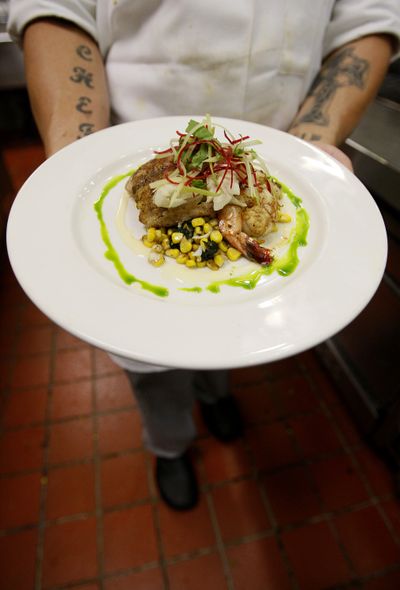Gulf seafood has image problem
Industry trying to shake off oil-tainted perception

NEW ORLEANS – The rich fishing grounds of the Gulf of Mexico are beginning to reopen more than three months after crude oil began gushing from the sea floor. But those who harvest, process and sell the catch face a new crisis: Convincing wary consumers it’s not only delicious but also safe.
As BP PLC closed the books on a defining week in its battle to contain the oil, with engineers finally forcing the surging crude underground with a torrent of mud and cement, people along the Gulf Coast began looking to the future – including the fishing industry, which has a tough sell despite tests showing the catch seems safe to eat.
“We have a huge perception problem,” said Ewell Smith, director of the Louisiana Seafood Promotion and Marketing Board. “We have lost markets across the country, and some of them may be lost for good.”
The Gulf accounts for a majority of the domestic shrimp and oysters eaten by Americans and about 2 percent of overall U.S. seafood consumption. But with safety suspicions abounding, consumers are turning up their noses and some wary suppliers appear to be turning to imports.
Tammy McNaught arrived in New Orleans from San Francisco on Saturday for a long weekend, and after seeing months of news coverage about the oil spill was trying to decide whether she would eat seafood and how much.
“It’s probably nothing, but I’m not sure if it is safe. However, if it’s deep fried, you know it is going to be OK,” McNaught said, laughing.
At the annual Great American Seafood Cookoff, held Saturday in New Orleans, competition was secondary this year to spreading the good word about Gulf seafood.
“Right now the general perception is that Gulf seafood is tainted. And I’m sure some of it is,” said Peter Fischbach, of Toms River, N.J., a chef with Gourmet Dining Services. “But the stuff that’s tainted is not on the market.”
BP last week finished pumping mud and cement into the well that blew out after the Deepwater Horizon rig exploded April 20, killing 11 workers. Spokesman Max McGahan said Saturday that engineers were still waiting for the cement to harden so work could begin on drilling the final 100 feet of a relief well.
Some fishing grounds remain closed as oil continues to wash through the Gulf, but state and federal tests have shown samples of seafood in some areas safe to eat. The Food and Drug Administration says chemical dispersants used to break up the oil do not pose a public health concern.
Such assurances appear to be doing little to quell distaste for Gulf seafood, though.
Some processors are having difficulty selling the seafood they can get, even to long-established customers.
“I’ve talked to suppliers who have sold 20 years to companies and are now being told no,” Smith said. “A lot of people are substituting imported product for Gulf product.”
Keath Ladner, owner of Gulf Shores Sea Products in Bay St. Louis, Miss., won’t send his 70 boats out, even though shrimp season is open in some Mississippi waters.
“They’d lose money,” Ladner said. “Nobody wants it. I can’t sell it.”
Ladner’s main national buyer sent him a letter recently telling him it wouldn’t be buying seafood from the Gulf “until further notice,” he said.